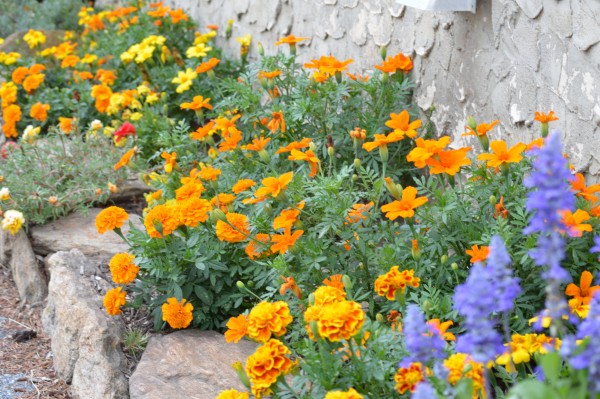Reading Lisa Tome’s recent column made me chuckle. The column dad and I take turns writing is supposed to be about gardening. Inspiration generally comes from our own yards, bird watching trips, and more often than not, customers’ questions. Sometimes the idea fountain dries up, that’s when you get a history lesson like last week’s marigold article, which came from a class I taught at Longwood. Luckily this week I have a question to answer.
“There is a white coating on my bee balm that happens every year and sometimes kills the plant. What am I doing wrong?”
It’s not you- it’s powdery mildew. It is a fungal disease that is common on certain plants most notably, summer phlox, lilacs, bee balm, veronica, golden rod, dahlias, grapes, squash and cucumbers and some others. If you find white of light gray powdery patches on the upper surface of leaves odds are it’s powdery mildew. Infections rates are highest in the summer, when humidity levels rise and temperatures warm.
Lower leaves are affected first, and often defoliate. The infection spreads up the plant in extreme cases. Sometimes even killing the plant.
Powdery mildew is a group of fungi- the ones that affect lilacs are different than the ones that affect grapes, or phlox. No need to worry that one will infect neighboring plants of a different species.
So what can you do?Good air circulation is key- space plants that are affected apart from each other. Rather than a large phlox bed, separate them with other types of perennials. Also give plants some room for breeze to dry the foliage. Relative humidity of 90% is not good for people, but great for powdery mildew spore germination. Prune or divide large or overgrown plantings to improve air flow.
Choose resistant cultivars. If you must have summer phlox and have been plagued with powdery mildew, try ‘Jeanna’ or ‘David’. Both of those have some level of resistance. If you love bee balm, try ‘Jacob Kline’. Lilacs lovers try ‘Miss Kim’.
Avoid keeping foliage wet in the evening. Conventional wisdom says water in the evening when less water is lost due to evaporation. That’s ok as long as the foliage dries before nightfall. Try soaker hoses instead of overhead sprinklers for affected plants. The fungal spores aren’t splashed by rain or irrigation as much as the high humidity causes the problem.
There is an old folk remedy that has been scientifically proven effective. My grandmother always used to rinse out her milk jugs and dump it on her phlox and bee balm. Turns out a 1:10 dilution of milk water is a god preventative and actually slows fungal growth.
Chemical treatments in extreme cases include sulfur, neem oil and potassium bicarbonate. Commercial formulations are available at hardware stores, or garden centers.
Most important is removing infected foliage. Do not compost diseased tissue, as temperatures inside compost piles are not high enough to kill spores. Bag diseased foliage at the end of the season and dump it or burn it.
Hopefully inspiration will strike next week, or I’ll be lucky enough for someone to ask me a question.

 June has more than made up for the rain deficit of April and May. All the water the last few weeks has leached most nutrients from hanging baskets and patio planters If you bought beautiful hanging baskets around Mother’s Day, they may be looking yellow and ratty. You are not alone. Here are some pointers to keeping hanging baskets nice all summer long.
June has more than made up for the rain deficit of April and May. All the water the last few weeks has leached most nutrients from hanging baskets and patio planters If you bought beautiful hanging baskets around Mother’s Day, they may be looking yellow and ratty. You are not alone. Here are some pointers to keeping hanging baskets nice all summer long.